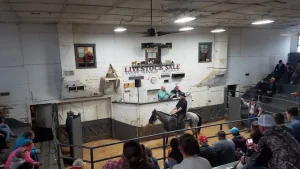The sugarcreekstockyard continues to be a significant hub for livestock trading in the region, providing a crucial platform for both buyers and sellers. Recent market activity at the yard reflects a complex interplay of factors influencing livestock prices. Demand for feeder cattle has shown some variability, influenced by feed costs and anticipated pasture conditions. Stronger demand has been observed for finished cattle destined for processing, although this segment remains sensitive to packer margins and consumer demand for beef. Overall, price fluctuations at the sugarcreekstockyard mirror broader agricultural trends, with seasonal variations and economic indicators playing a substantial role in shaping market values.
Analyzing recent sales data from the sugarcreekstockyard https://sugarcreekstockyard.com/ reveals nuanced trends across different livestock categories. Calf prices have experienced some volatility, potentially linked to the availability of forage and producer expectations for future market conditions. Sow and boar markets have also shown their own dynamics, influenced by pork demand and breeding herd sizes. Sheep and goat prices, while representing a smaller volume compared to cattle, exhibit trends driven by ethnic market demands and seasonal availability. Staying informed about these specific price movements within the sugarcreekstockyard is essential for producers and buyers to make informed decisions regarding their livestock transactions.
Factors Influencing Market Trends at Sugarcreek Stockyard
Several key factors consistently impact the market trends observed at the sugarcreekstockyard. Feed grain prices, particularly corn and soybean meal, exert significant influence on the cost of raising livestock, directly affecting the prices buyers are willing to pay for feeder animals. Weather patterns and pasture conditions also play a crucial role, influencing the availability of grazing and the overall health and weight of cattle brought to market at the sugarcreekstockyard. Furthermore, broader economic conditions, including interest rates and consumer spending, can indirectly impact the demand for meat products and consequently the prices offered at the sugarcreekstockyard.
Beyond these fundamental agricultural and economic drivers, specific market dynamics within the livestock industry also shape trends at the sugarcreekstockyard. Export demand for beef and other meat products can create upward pressure on prices, while domestic supply levels can have the opposite effect. Government policies and regulations related to agriculture and trade can also introduce volatility or stability into the market. Understanding these interconnected factors is critical for participants in the sugarcreekstockyard to anticipate future price movements and adjust their strategies accordingly.
Outlook and Future Considerations for Sugarcreek Stockyard
Looking ahead, the sugarcreekstockyard will likely continue to be influenced by evolving agricultural practices and global market forces. The increasing focus on sustainable farming and traceability may impact the types of livestock traded and the premiums buyers are willing to pay. Technological advancements in animal husbandry and data analytics could also play a role in how livestock are valued and marketed through the sugarcreekstockyard. Adapting to these changes will be crucial for the long-term viability and relevance of the sugarcreekstockyard as a key livestock trading center.
Producers and buyers utilizing the sugarcreekstockyard should remain vigilant regarding emerging trends and potential disruptions. Factors such as disease outbreaks, shifts in consumer preferences towards alternative proteins, and evolving environmental regulations could all have significant implications for market prices and trading volumes. By staying informed and adaptable, participants in the sugarcreekstockyard can navigate the complexities of the livestock market and position themselves for future success. The sugarcreekstockyard‘s ability to adapt to these changes will determine its continued role as a vital component of the agricultural economy.
